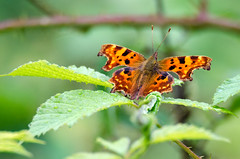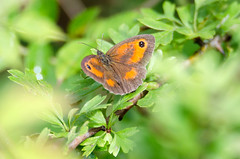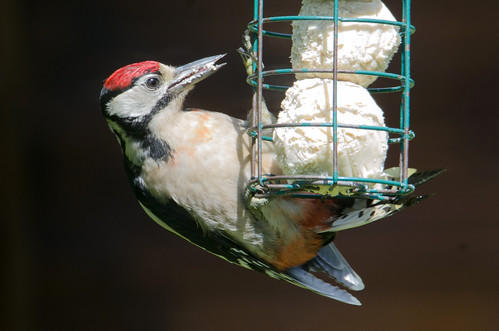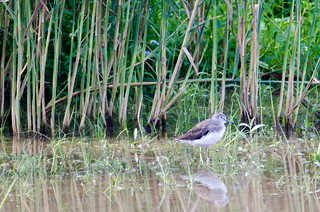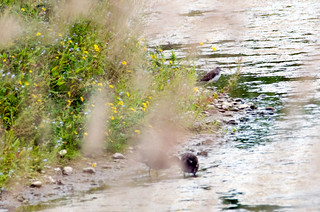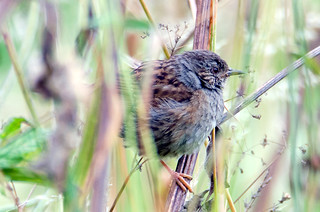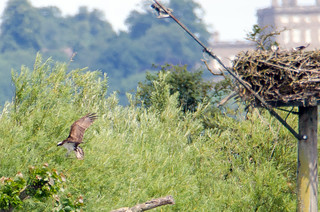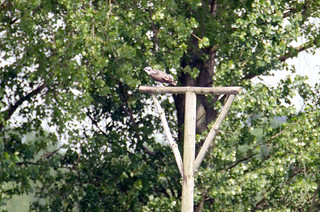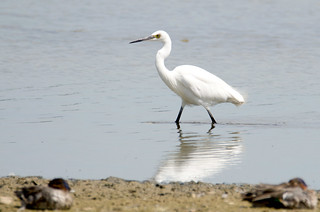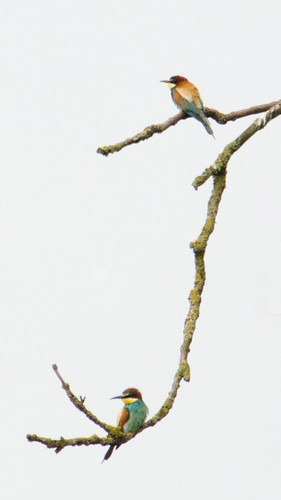Decided to visit Farmoor Reservoir and see if I could catch up with the ruddy shelduck. A bacon butty set me up for the morning - Charlotte and I were on site by 9.20am. By the cafe we started with two Egyptian geese, coot and mallard. Which way to go? We couldn't see any birders around so opted to take the causeway first and hope to bump into someone.
Common term were fishing left to F2 and no long after we set off, a hooter sounded and around a dozen boats carrying two fishermen each steamed out. That might make some of the birds mobile.
Soon a turnstone could be seen on the left wall - 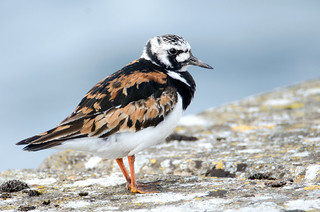 got a couple of photos before it hopped down onto the waters edge. As it did so, I saw another bird run ahead of it; it turned out to be a sanderling [#143]. I spent a bit of time following the sanderling up the causeway while Charlotte checked out the hide. Eventually the sanderling flew back passed me, and I doubled back. I then had sanderling, turnstone, common sandpiper and dunlin.
got a couple of photos before it hopped down onto the waters edge. As it did so, I saw another bird run ahead of it; it turned out to be a sanderling [#143]. I spent a bit of time following the sanderling up the causeway while Charlotte checked out the hide. Eventually the sanderling flew back passed me, and I doubled back. I then had sanderling, turnstone, common sandpiper and dunlin.
Just as we approached the end of the causeway we chatted to an birder who had caught us up and when I asked about the shelduck he suggested it might not be there as it hadn't appeared in the early morning reports; if it was there he suggested it would be on F1. We then had common tern land on a buoy right.
We dropped down to the Pinkhill Reserve only to find that,  due to antisocial behaviour, the hide was locked. Bugger. We did enjoy the walk and sight of large quantise of quince fallen on the paths. We returned back onto the perimeter path and quickly checked round F1 - no obvious sighting of the shelduck and so opted to complete the circuit round F2.
due to antisocial behaviour, the hide was locked. Bugger. We did enjoy the walk and sight of large quantise of quince fallen on the paths. We returned back onto the perimeter path and quickly checked round F1 - no obvious sighting of the shelduck and so opted to complete the circuit round F2.
Passed a couple of (juvenile?) female red-crested pochard and stopped to watch a fisherman land a sizeable rainbow trout. As it was netted we talked with a birding couple passing in the opposite direction - the shelduck was indeed on F2 and not far ahead. Close views of the ruddy shelduck [#144] allowed some decent photo opportunities.
Not far left we had a hobby high right then some 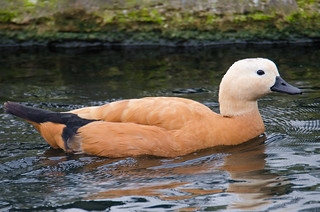 juvenile willow warbler in the trees. Another, or one of the previous Egyptian geese was feeding on the grass with a group of greylag geese.
juvenile willow warbler in the trees. Another, or one of the previous Egyptian geese was feeding on the grass with a group of greylag geese.
We then decided to have a coffee in the cafe before heading home.
Today's sightings (35) included: black-headed gull, blackbird, blue tit, buzzard, carrion crow, common sandpiper, common tern, coot, cormorant, dunlin, Egyptian goose, great black-backed gull, great crested grebe, great tit, greylag goose, hobby, house martin, long-tailed tit, magpie, mallard, mute swan, pied wagtail, red-crested pochard, robin, ruddy shelduck, sand martin, sanderling, starling, swallow, swift, tufted duck, turnstone, willow warbler, woodpigeon and yellow-legged gull.



